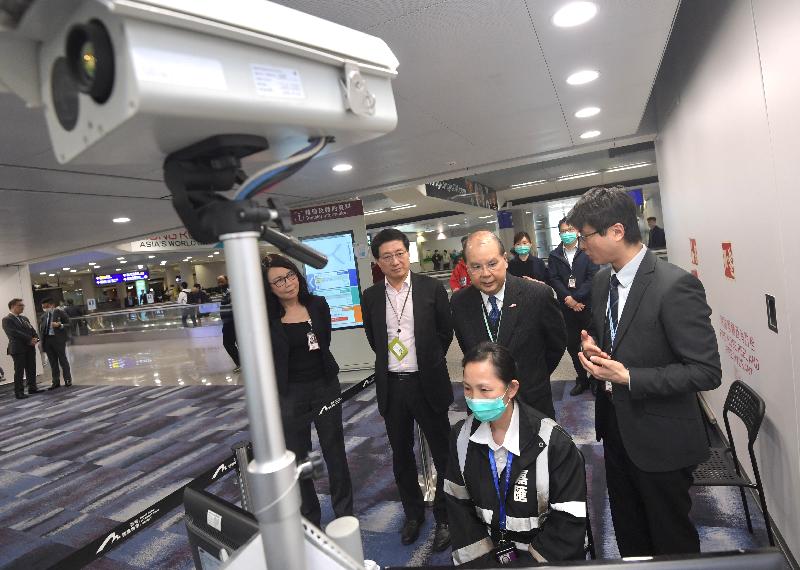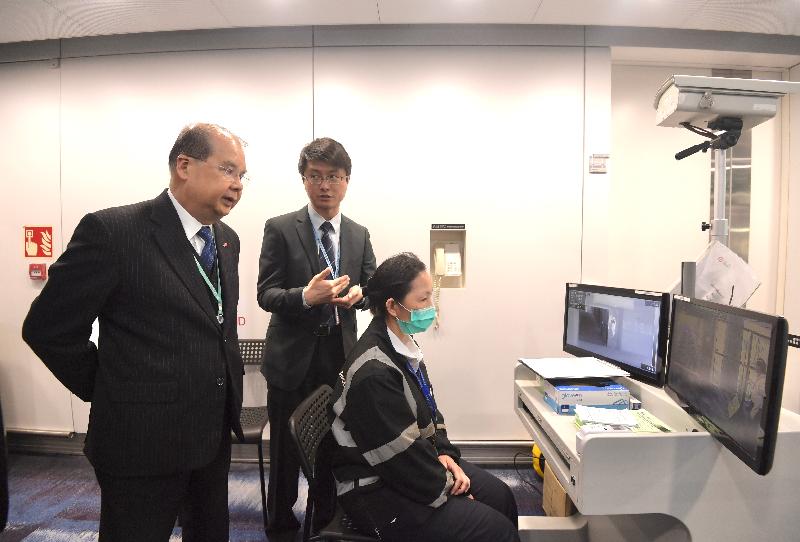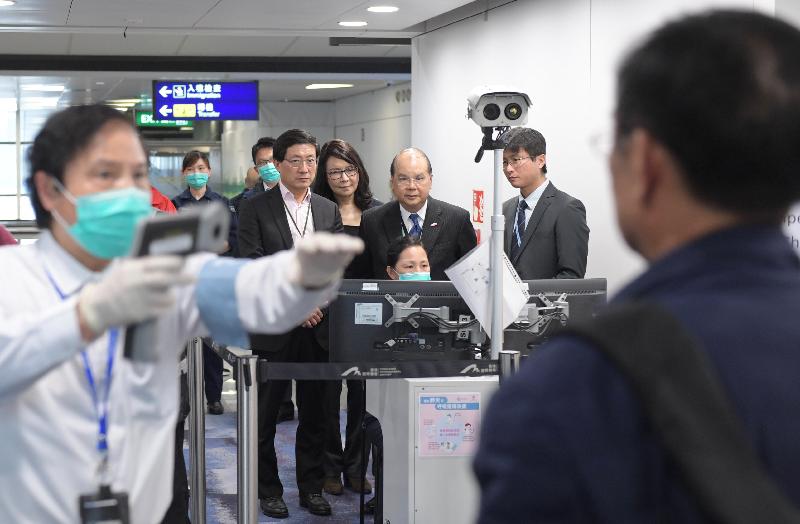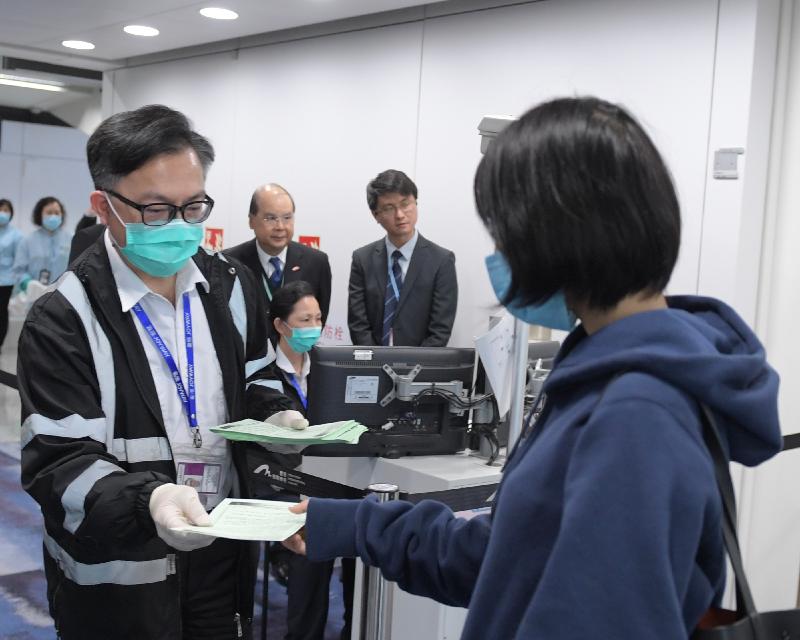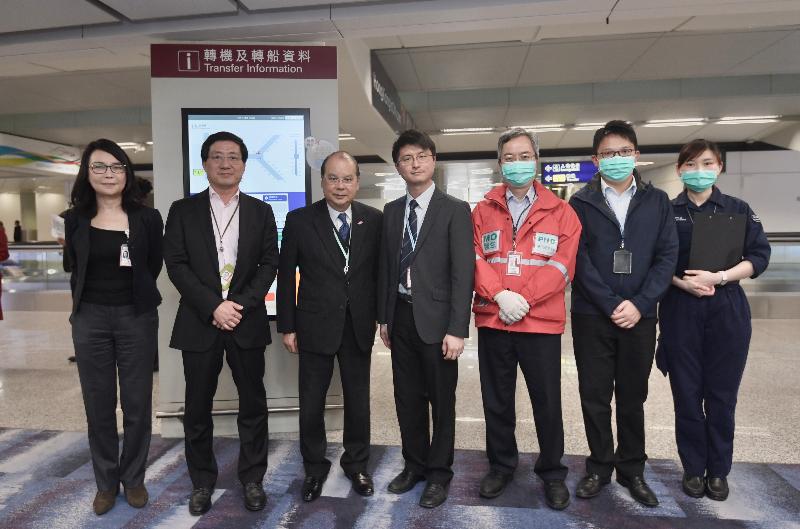LCQ20: Pilot schemes on elderly care service vouchers
Following is a question by the Hon Leung Yiu-chung and a written reply by the Secretary for Labour and Welfare, Dr Law Chi-kwong, in the Legislative Council today (January 8):
Question:
The Social Welfare Department (SWD) launched the First and the Second Phases of the Pilot Scheme on Community Care Service Voucher for the Elderly (CCSV Pilot Scheme) in September 2013 and October 2016 respectively, as well as the Pilot Scheme on Residential Care Service Voucher for the Elderly (RCSV Pilot Scheme) in March 2017. In this connection, will the Government inform this Council:
(1) Regarding the First and the Second Phases of the CCSV Pilot Scheme respectively, of the following information in each of the years in which they were implemented:
(i) a breakdown of the number of service units by service type;
(ii) number of day care service places;
(iii) number of home care service places;
(iv) number of concluded cases;
(v) cumulative number of recipients of the Community Care Service Voucher (CCSV);
(vi) number of CCSV users;
(vii) number of persons who did not use any of the CCSVs issued to them;
(viii) cumulative number of persons having left the Pilot Scheme, together with a breakdown by the major reason for their leaving the Scheme as far as SWD knows;
(ix) monthly average amount of subsidies; and
(x) administrative costs incurred by the Scheme.
(2) Of the following information on the RCSV Pilot Scheme in each of the past three years:
(i) a breakdown of the number of service units by service type;
(ii) number of service places;
(iii) number of concluded cases;
(iv) cumulative number of recipients of the Residential Care Service Voucher (RCSV);
(v) number of RCSV users;
(vi) number of persons who did not use any of the RCSVs issued to them;
(vii) cumulative number of persons having left the Pilot Scheme, together with a breakdown by the major reason for their leaving the Scheme as far as SWD knows;
(viii) monthly average amount of subsidies; and
(ix) administrative costs incurred by the Scheme.
(3) Given that SWD has commissioned consultants to review the effectiveness of the two Pilot Schemes, of the timetables of the review work, whether the approach of the reviews includes public engagement exercises, and whether the review reports will be made public; if not, of the reasons for that?
Reply:
President,
My reply to the Member's question is as follows:
(1) The first phase of the Pilot Scheme on Community Care Service Voucher for the Elderly (CCSV Pilot Scheme) was implemented from September 2013 to August 2017, while its second phase commenced in October 2016. The information of the first and second phases of the CCSV Pilot Scheme from 2013-14 to 2019-20 is as follows:
The breakdown on number of recognised service providers (RSPs), service types and service places by year:
| The first phase of the Pilot Scheme | Number of RSPs | Number of service places (Note) |
| 2013-14 | 62 | 881 |
| 2014-15 | 62 | 923 |
| 2015-16 | 62 | 993 |
| 2016-17 | 62 | 998 |
| 2017-18 (as at end-August 2017) | 62 | 998 |
Note: The first phase of CCSV may only be used for day care services. RSPs may separately provide home care services to CCSV users who are in need.
| The second phase of the Pilot Scheme |
Number of RSPs | Number of service places | |
| Day care services | Home care services | ||
| 2016-17 | 124 | 2 081 | 2 944 |
| 2017-18 | 125 | 2 254 | 3 040 |
| 2018-19 | 153 | 2 815 | 4 861 |
| 2019-20 (as at end-November 2019) | 153 | 2 952 | 5 151 |
​The breakdown on cumulative number of eligible applications processed, persons issued with CCSVs, number of persons who have used and have not used CCSVs by year:
| The first phase of the Pilot Scheme | Cumulative number of eligible applications processed (number of persons issued with CCSVs) | Number of CCSV holders | Cumulative number of persons who have left the Pilot Scheme | ||
| who have used CCSVs | who have not used CCSVs | who have used CCSVs | who have not used CCSVs | ||
| 2013-14 | 1 251 | 539 | 604 | 34 | 74 |
| 2014-15 | 2 092 | 972 | 232 | 351 | 537 |
| 2015-16 | 2 919 | 1 177 | 187 | 784 | 771 |
| 2016-17 | 2 968 | 1 061 | 14 | 1 071 | 822 |
| 2017-18 (as at end-August 2017) |
2 968 | 1 053 | 1 | 1 080 | 834 |
| The second phase of the Pilot Scheme | Cumulative number of eligible applications processed (number of persons issued with CCSVs) | Number of CCSV holders | Cumulative number of persons who have left the Pilot Scheme | ||
| who have used CCSVs | who have not used CCSVs | who have used CCSVs | who have not used CCSVs | ||
| 2016-17 | 3 373 | 1 871 | 1 185 | 109 | 208 |
| 2017-18 | 6 520 | 3 031 | 1 357 | 831 | 1 301 |
| 2018-19 | 8 813 | 3 608 | 1 535 | 1 745 | 1 925 |
| 2019-20 (as at end-November 2019) |
10 439 | 4 077 | 1 756 | 2 353 | 2 253 |
​The breakdown on cumulative number of persons who have left the Pilot Scheme by year:
| Reason for leaving the Pilot Scheme | Cumulative number of persons who have left the first phase of the Pilot Scheme | |||||||
| 2013-14 | 2014-15 | 2015-16 | 2016-17 | 2017-18 (as at end-August 2017) | ||||
| Natural turnover | ||||||||
| Will be/have been allocated with subsidised community care service or subsidised/ private residential care service | 48 | 339 | 642 | 836 | 845 | |||
| Deceased | 24 | 126 | 227 | 297 | 298 | |||
| Taken care of by family members or domestic helpers | 10 | 117 | 236 | 259 | 264 | |||
| Others (e.g. hospitalised, out of town) | 2 | 32 | 82 | 102 | 106 | |||
| Service-related | ||||||||
| No suitable service providers/ service packages | 24 | 274 | 368 | 399 | 401 | |||
| Total | 108 | 888 | 1 555 | 1 893 | 1 914 | |||
| Reason for leaving the Pilot Scheme | Cumulative number of persons who have left the second phase of the Pilot Scheme | |||
| 2016-17 | 2017-18 | 2018-19 | 2019-20 (as at end-November 2019) | |
| Natural turnover | ||||
| Will be/have been allocated with subsidised community care service or subsidised/ private residential care service | 137 | 847 | 1 584 | 2 097 |
| Deceased | 76 | 483 | 919 | 1 189 |
| Taken care of by family members or domestic helpers | 40 | 375 | 545 | 614 |
| Others (e.g. hospitalised, out of town) | 24 | 225 | 357 | 421 |
| Service-related | ||||
| No suitable service providers/ service packages | 40 | 202 | 265 | 285 |
| Total | 317 | 2 132 | 3 670 | 4 606 |
As the service mode, places, items, combinations, numbers of service users and time slots for service provision are not the same for the two phases of the Pilot Scheme and each RSP, the Social Welfare Department (SWD) does not have information related to the monthly average amount of subsidy granted to each RSP and the related administrative costs.
(2) In the past three years, the breakdown on cumulative number of RSPs and service places under the Pilot Scheme on Residential Care Service Voucher (RCSV) for the Elderly (the RCSV Pilot Scheme) by year:
| Year | Number of RSPs | Number of service places |
| 2017-18 | 86 | 4 691 |
| 2018-19 | 104 | 5 394 |
| 2019-20 (as at end-November 2019) |
118 | 5 816 |
​The breakdown on cumulative number of eligible applications processed, persons issued with RCSVs, RCSV users and persons issued with RCSVs but have not used them by year:
| Year | Cumulative number of eligible applications processed (number of persons issued with RCSVs) | Cumulative number of RCSV users | Cumulative number of persons issued with RCSVs but have not used them |
| 2017-18 | 353 | 325 | 28 |
| 2018-19 | 1 163 | 978 | 185 |
| 2019-20 (as at end-November 2019) |
1 867 | 1 617 | 250 |
​The breakdown on cumulative number of persons who have left the Pilot Scheme and reasons for leaving the Pilot Scheme by year:
| Reason for leaving the Pilot Scheme | Cumulative number of persons who have left the Pilot Scheme | ||
| 2017-18 | 2018-19 | 2019-20 (as at end-November 2019) | |
| Elderly persons having no immediate need for residential care services | 0 | 10 | 21 |
| Taken care of by carers of family members, domestic helpers, etc. or community care service | 1 | 29 | 71 |
| Deceased | 19 | 106 | 233 |
| The preferred RSP was full/no suitable RSPs | 3 | 15 | 50 |
| Chose to wait for subsidised residential care places | 4 | 18 | 27 |
| Refused to accept the co-payment arrangement | 1 | 10 | 18 |
| Others (e.g. long-term hospitalisation, out of town, chose not to leave the Comprehensive Social Security Assistance Scheme, etc.) | 2 | 11 | 16 |
| Total | 30 | 199 | 436 |
​As the service places and the duration for accommodating RCSV holders are different for each RSP, the SWD does not have information related to the monthly average amount of subsidy granted to each RSP and the related administrative costs.
(3) The SWD has commissioned consultants to conduct evaluation of effectiveness on the second phase of the CCSV Pilot Scheme and the RCSV Pilot Scheme. In the process of evaluation, the consultants have collected the views of stakeholders through interviews, focus group discussions, telephone surveys, questionnaires, etc. The SWD and the consultants are conducting comprehensive analysis on the data and views collected in the studies. Upon the completion of the evaluation reports, the SWD will study the content of the reports and consider the way forward for the two pilot schemes.
